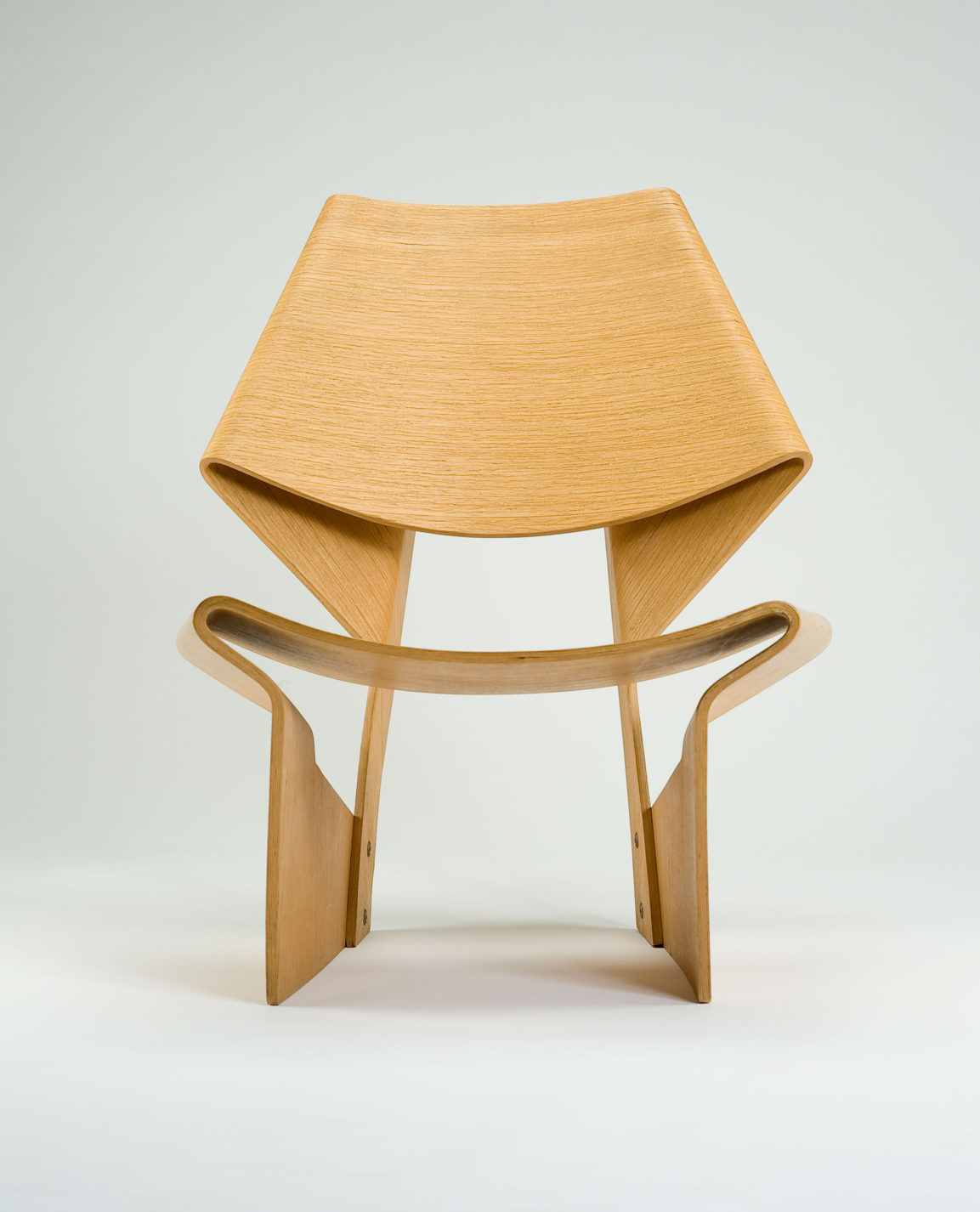
Side Chair
- Designed by
- Grete Jalk (1920–2005)
- Material
- Beech-faced plywood and steel bolts
- Produced by
- Paul Jeppesen, Stor Heddinge, Denmark
- Dimensions
- 76.3 x 71.7 x 62.9 cm
The Montreal Museum of Fine Arts, the Liliane and David M. Stewart Collection, D89.103.1
Although plastic was the preferred material for progressive furniture in the 1960s, designers like Jalk also explored innovative solutions in bentwood, experiments that had been started by Charles and Ray Eames and Alvar Aalto in the 1940s. The undulating surfaces of this chair, like origami or folded cloth, proved that new aesthetic results from bentwood were possible.
Made from two pieces of plywood, one for the base and one for the back, the chair was easier to produce than chairs molded in three planes, such as the Eameses’ plywood furniture. Jalk’s chair is part of a laminated furniture series that she initiated in 1962. It was available in a variety of surface veneers, including teak, rosewood, and beech, used here.
The Montreal Museum of Fine Arts, photo: Denis Farley.




